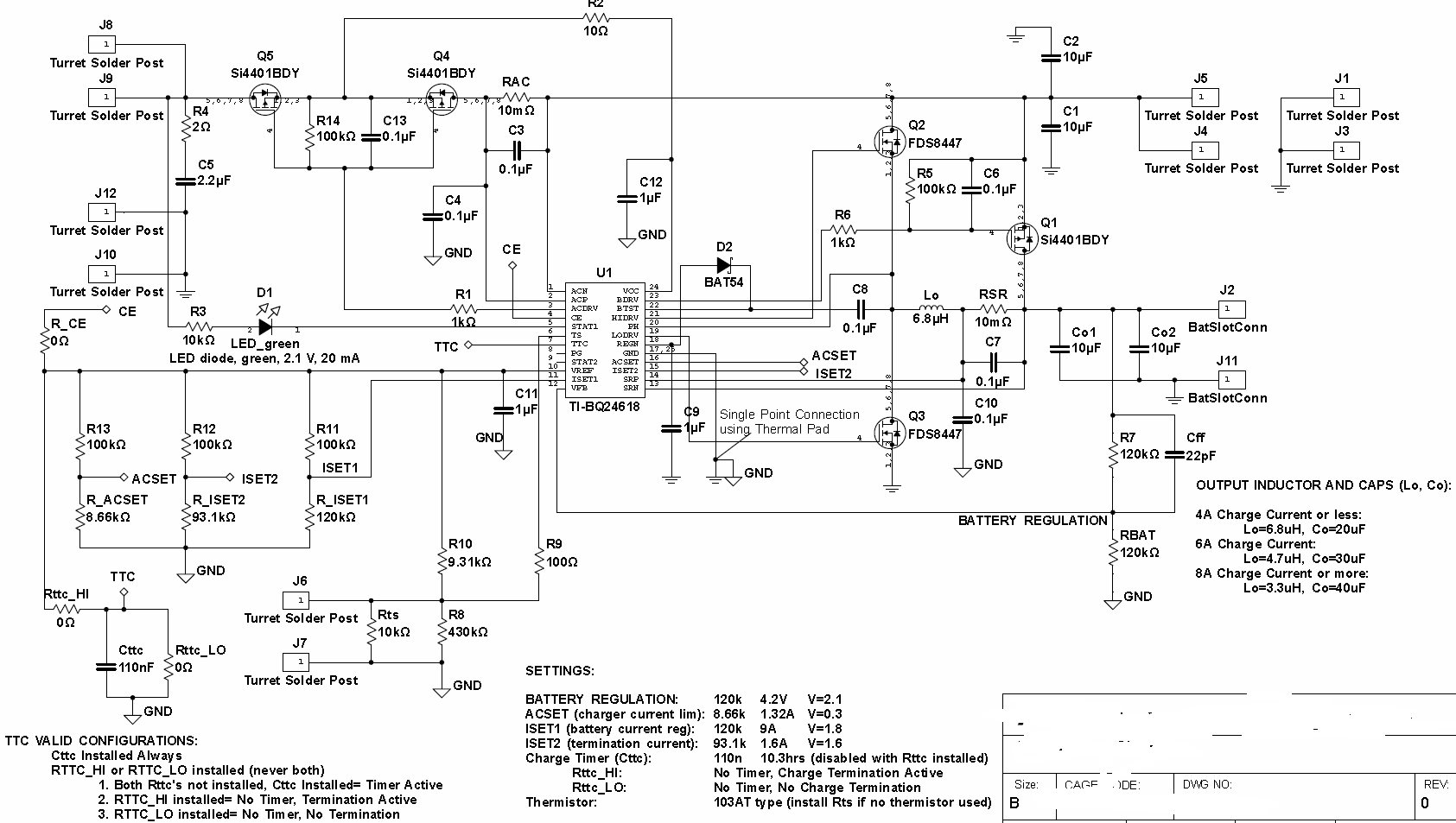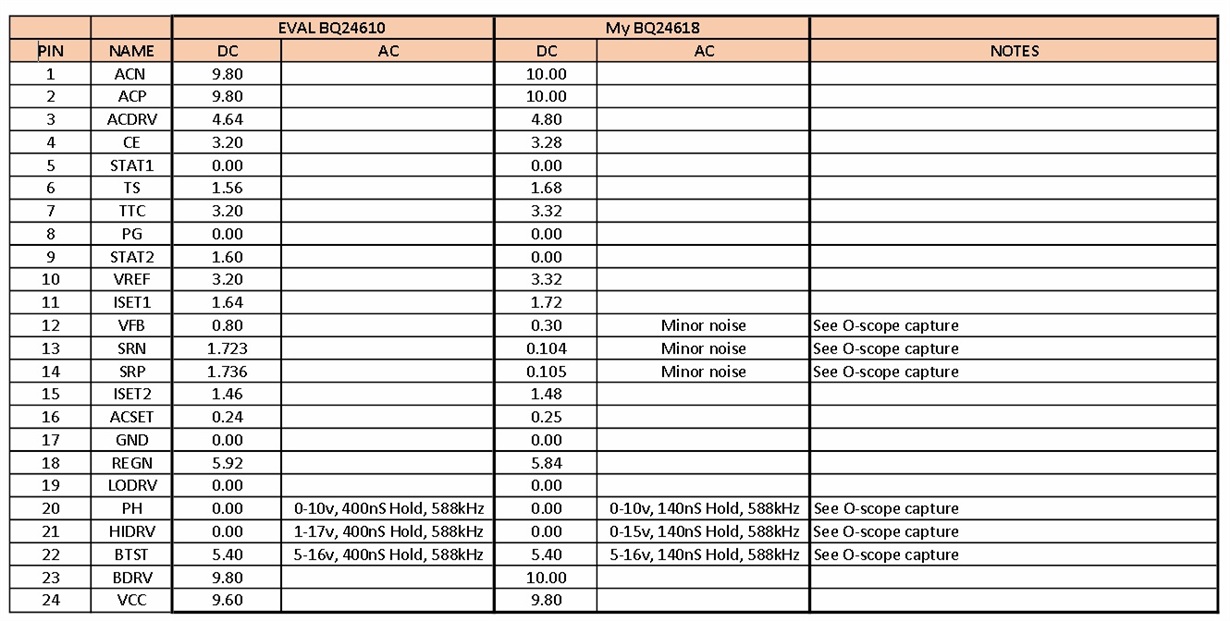Hi,
I designed and manufactured some charging boards based on the design of two Evaluation Boards I bought with the 24610 chip.
I'm charging 11, 4.2 (max voltage) Li-Ion batteries in parallel (11P). I adjusted the various resisters to set the charge voltage for 4.2, the battery current (precharge and termination) to 1.6A and AC supply limit to 1.32A.
I had to adjust the precharge current because the 30 minute timer would time out when charging a deeply discharged pack. Hence the 1.6A battery precharge current (I authored that other post...).
Anyway, when the battery pack is below 3.1V, the Evaluation board is in Phase-1 and charges the pack with 1.6A...and this happens no matter what the battery pack starting voltage is.
With my design (pretty much copied from the EVAL schematic), my charger behaves same as the evaluation board....except that if the starting voltage of the pack is below 2.25V, the charger will behave oddly. The charging current varies between 10mA and 100mA, the HIDRV gate seems like it's switching...but looks sinusoidal and noisy...and the LODRV is at 0V. Almost as if some sort of fault is starting and stopping it...
When the pack eventually reaches about 2.25V, then the thing kicks off into Phase-1, the pack charges at 1.6A and the drive signals on the HIDRV and LOWDRV gates look normal (square waves about 600kHz...not 50% duty cycle though...as should be). And it charges to 3.1V where it kicks into Phase-3 CV mode as it should....but then instead of terminating the charge at 1.6A, it charges all the way down to a battery pack draw of less than 100mA....
I'm thinking I could have a damaged inductor or LODRV MOSFET...but before I start replacing components...I thought you might have some insight.
I would have though if I blew something....that everything would be inoperable or flaky. In my case, it's only a problem with precharge phase (but only when pack is less than 2.25V) and current termination.
Might be the design (which is pretty much copied from EVAL schematic) or a blown part...but which? Or other?
Again, the EVAL boards don't seem to care what about the 11P pack's starting voltage...and they stop charging at about 1.6A battery draw. Yes, the EVAL boards are reconfigured to match this design.
Tom



